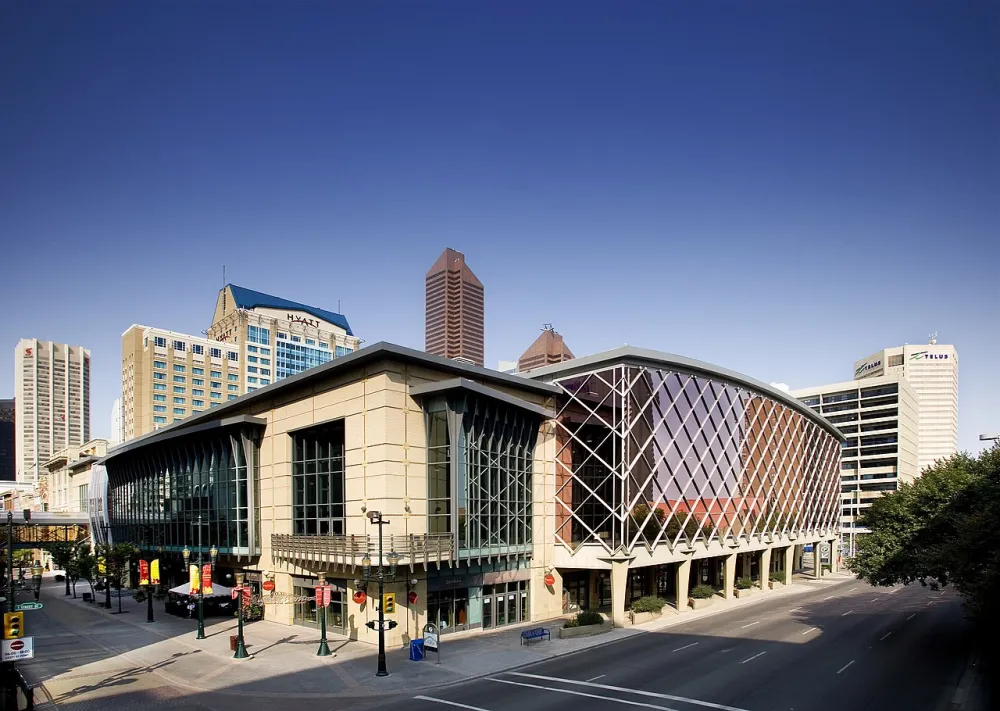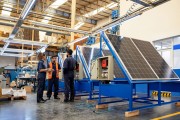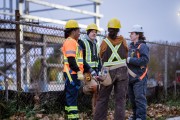As Canada and the world journey toward a net-zero economy, what is the role of postsecondary institutions? I recently discussed this question at a forum organized by Colleges and Institutes Canada (CICAN), where I shared the stage with Geni Peters, Director of Research at ECO Canada, and Heather McIntosh, Associate Director, Education & Skills, Conference Board of Canada, with moderator, Janet Morrison President and Vice-Chancellor of Sheridan College.
Education is in many respects about the future: preparing future workers to embrace the opportunities and the challenges of a society in transformation. When it comes to diversifying energy sources, postsecondary institutions have essential contributions to make in getting us from here to there.
What is a green job?
As director of the Pembina Institute’s Equitable Transition program, I wanted to bring a positive message to CICAN’s gathering. I believe that a transition to net-zero can be a net-positive for Canadian workers and for workers of the future.
But first we need to understand—what exactly is a green job?
The Pembina Institute recently worked with the Canadian Labour Congress to develop the Sustainable Jobs Blueprint Part I and Part II, which together provide a roadmap for decision makers in helping Canada create green jobs and prepare workers to thrive in the energy transition. In our research for the Blueprint, we examined how the transition to net-zero emissions will impact employment and interprovincial labour force growth in Canada, and the role of proposed labour policy interventions in supporting communities and occupations most at risk. The modeling addressed the two sides of the workforce transition: the need to mitigate against the loss of jobs in the traditional energy sector while positioning workers to thrive at new jobs in the clean energy economy.
We defined the clean energy economy as the technologies, services and resources that increase renewable energy supply, enhance energy productivity, improve the infrastructure and systems that transmit, store and use energy while reducing carbon pollution. A green job, therefore, is a job in the clean energy economy.
An entrepreneur developing a renewable energy project has a green job. A skilled tradesperson working on deep retrofits to cut carbon emissions and increase the energy efficiency and livability and resilience of buildings has a green job. Countless more examples abound in 2024. Our modelling showed that the number of jobs in the clean economy will grow to almost two million by 2050—in transportation, buildings, electricity and more.
Role of postsecondary education in Canada’s green jobs future
As one of my co-panelists, Geni Peters, noted at CICAN’s conference, “the greatest demand over the next decade will be for workers in natural and applied sciences occupations (including technologists/technicians and data experts), business occupations (including logistics, business development and management) and skilled trades who also have knowledge of environmental processes and technology and are familiar with the requirements of environmental regulations.”
This is a near-future for which postsecondary education is well positioned to help Canadians embrace.
Pembina’s research for the Sustainable Jobs Blueprint found that postsecondary institutions—and other training centres including Union Training Centres—need to scale up their training to support a threefold increase in the number of workers who will require training along the path to net-zero, with the bulk of that training required in the next 10 years.
Concurrently, postsecondary institutions should monitor labour trends that are changing the workforce and educate students about the nature of work they are readying themselves for, such as how prevalent jobs are, where they are located, what kind of compensation they can expect, and what will be the impact of the energy transition on their preferred careers.
Understandably, there is considerable trepidation about the energy transition, particularly in those industries and in those regions of Canada where jobs are at risk or about to undergo profound change. Postsecondary institutions need to be aware of the anxiety felt by newcomers to the workforce as well as mid-career workers. What Pembina learned through talking to unionized workers is that they felt more confident about the pathway to net-zero when they knew that policy solutions were developed or bargained with their union and plans were in place to support them, their families and their communities. They want to know that a job will be there for them in the future and look to government and industry for certainty about the long-term direction of our economy.
For their part, what postsecondary students want is to build a connection to industry so that when they exit school they are ready to work in a meaningful way toward the energy transition. This requires ongoing and reciprocal dialogue between employers and educators on what skills new graduates need to succeed in the green economy.
As my other CICAN conference co-panelist, Heather McIntosh said eloquently: “Colleges and institutes will be key in instilling the core values, attitudes, and perspectives necessary for future professionals to carry into the workforce, where they can cultivate sustainable mindsets among future graduates while providing them with the skills required for green jobs.”
We cannot get to net-zero without our postsecondary institutions. Colleges and universities have the unique chance and responsibility to encourage learners to adopt green skills in every job. In hearing the aspirations of students and responding to the needs of government and industry, they are the essential bridge from the present to the future.








